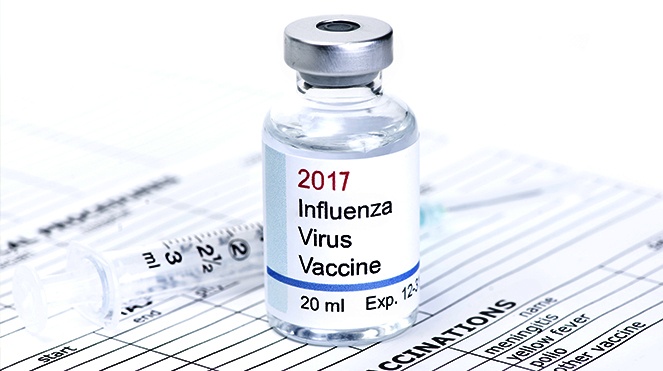
As we bid farewell to Summer and welcome in Fall, we know with the cooler temperatures and changing leaves that flu season is at our doorstep. According to the Center for Disease Control (CDC), flu activity begins in October and lasts through May, with cases spiking between December and February. Since we never know when or where the flu will strike, health officials recommend everyone six months of older the get the flu shot.
The Flu Shot Doesn’t Give You the Flu
We’ve all heard the rumor that you can get the flu shot from the flu vaccine, but experts say it’s all a myth! The viruses in the flu shot are dead viruses used to teach the immune system what to attack by mimicking an infection, these dead viruses cannot give people the flu. However, it takes the human body about two weeks after the vaccine to build up immunity, so within that time people are vulnerable to contracting to the flu. Dr. William Schaffner, a preventive medicine and infectious disease expert at Vanderbilt University School of Medicine says people may even mistakenly blame symptoms of a cold on the vaccine.
The Flu Vaccine Changes Year-to-Year
The flu virus is constantly changing, so each year a new flu vaccine is developed, depending how the virus plays out in the southern hemisphere. According to Jonathan Temte, physician and professor in the University of Wisconsin-Madison Department of Family Medicine and Community Health, flu seasons in Australia, New Zealand and South Africa are good indicators of what the flu season will look like in the United States.
Flu vaccines are comprised of either three or four strains to protect against two influenza A strains and one B strain, or two of each strain.
Influenza A: Generally responsible for large flu epidemics. Birds are often the hosts of influenza A viruses, which can be transmitted from bird to human causing devastating outbreaks. (examples: H1N1, H2N2, H3N3)
Influenza B: Can cause flu outbreaks, but occur less frequently than outbreaks of influenza A since humans are the natural host of influenza B.
This year’s vaccine is trivalent, containing two A strains and a B strain, but only one of the three strains will be different from last year’s flu shot. Although there are several forms of the flu vaccine, the CDC recommends not administering the nasal spray this season due to its ineffectiveness against a strain of the influenza A virus.
Vaccines Require Strict Monitoring Procedures
Monitoring temperature and environmental exposures are critical to preventing any damage to vaccines. To ensure optimal results, the CDC requires flu vaccines be stored and transported at temperatures ranging between 2°C to 8°C (35°F to 46°F). Vaccines are deemed unsafe and unusable if they are subjected to conditions outside of this temperature range.
MadgeTech data loggers provide continuous monitoring to comply with CDC guidelines, ensuring vaccines are carefully handled and kept at the proper temperatures at all times. MadgeTech offers simple cold chain solutions to deploy during transportation, and a wireless solution designed specifically for refrigeration units. These devices not only provide constant supervision and complete user control, but also provide the tools needed to satisfy validation requirements.
For more information about vaccine temperature monitoring, click here.






